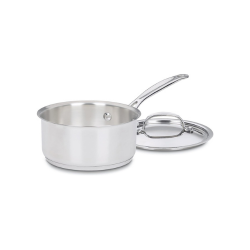Making homemade limoncello is a rewarding process that requires just a few ingredients and a good amount of patience. The Italian lemon liqueur is known for its bright, sweet, and refreshing taste, and making it at home allows you to control the intensity of these flavors.
Key ingredients
- Lemons: Limoncello starts with good lemons. Ideally, you should use organic lemons because you are using the peel, where pesticides can reside. Also, make sure the lemons are fresh and have a bright yellow skin. Some people swear by using specific types of lemons, such as the Sorrento or Amalfi lemons from Italy, but any fresh, high-quality lemons will work.
- Alcohol: The next key ingredient is alcohol. Traditionally, a pure grain alcohol such as Everclear is used because it’s flavorless, allowing the lemon flavor to shine through. However, it can be hard to find, and its high proof can make a very strong limoncello. Vodka is a common and effective alternative, as it’s widely available and has a neutral flavor. That’s what I used below.
Infusion process
- You’ll start by peeling your lemons, trying to get just the bright yellow zest and as little of the white pith as possible, as the pith can lend a bitter flavor to your limoncello.
- The peels are then steeped in the alcohol for a period of time to infuse the alcohol with the lemon flavor. This can be anywhere from a week to a month, but generally, the longer you let it infuse, the stronger and more complex the lemon flavor will be.
- After the infusion period, you’ll make a simple syrup with sugar and water and add it to the lemon-infused alcohol. This sweetens the limoncello and dilutes the alcohol a bit.
- After adding the simple syrup, you’ll let the mixture rest for another period of time. This allows the flavors to meld together and any harsh alcohol flavors to mellow out.
- Once the limoncello has rested, you’ll strain out the lemon peels and bottle the limoncello. It’s best served chilled, and it can be stored in the refrigerator or freezer for several months.
Making homemade limoncello is a fun and rewarding process, and it’s a great way to make use of a surplus of lemons. The resulting limoncello makes a delicious after-dinner digestif, a great homemade gift, or a lovely addition to various cocktails.
What is limoncello?
Limoncello is a traditional Italian liqueur that is primarily produced in Southern Italy, particularly around the Amalfi Coast, Sorrento, and the islands of Capri and Ischia.
Limoncello is made by steeping lemon zest (peels without the pith) in a neutral spirit, often high-proof grain alcohol, until the oil is released. The resulting yellow liquid is then mixed with a simple syrup of sugar and water.
The exact origins of limoncello are a bit hard to pin down, as several different regions in Southern Italy (including Sorrento, Amalfi, and Capri) claim to be the birthplace of this popular lemon liqueur. The history of limoncello is entwined with the history of these regions and the lemons they grow, known for their intense flavor and aromatic quality.
In Sorrento, it’s said that limoncello was first made at the beginning of the 20th century within a few local families who used the liqueur for their guests as a token of hospitality. Some attribute the invention of limoncello to Maria Antonia Farace, who cared for a rich garden of lemons and oranges in Sorrento in the early 1900s. Her grandson later opened a small homemade limoncello production business using her old recipe.
The island of Capri also claims the creation of limoncello, dating back to around 1900. There, it’s believed that a wealthy family first produced the lemon liqueur to offer it to their house guests.
The Amalfi Coast, known for its vibrant lemon cultivation, also stakes a claim to the origins of limoncello. Some suggest the liqueur was developed in the early 20th century by industrious lemon farmers looking for a way to utilize the zest of the lemons after selling the juice.
Despite these different claims, it’s clear that limoncello is a product of the region’s long-standing tradition of lemon cultivation. The sweet and fragrant ‘Sfusato’ lemons grown in the region are considered among the finest in the world and are central to the quality of limoncello.
As far as commercial production goes, limoncello only really started to become popular outside the Southern Italy region in the late 20th and early 21st centuries. Today, it’s a staple after-dinner digestif in Italy and enjoyed around the world.






Pingback: Limoncello Mezcal Margarita - He Cooks.